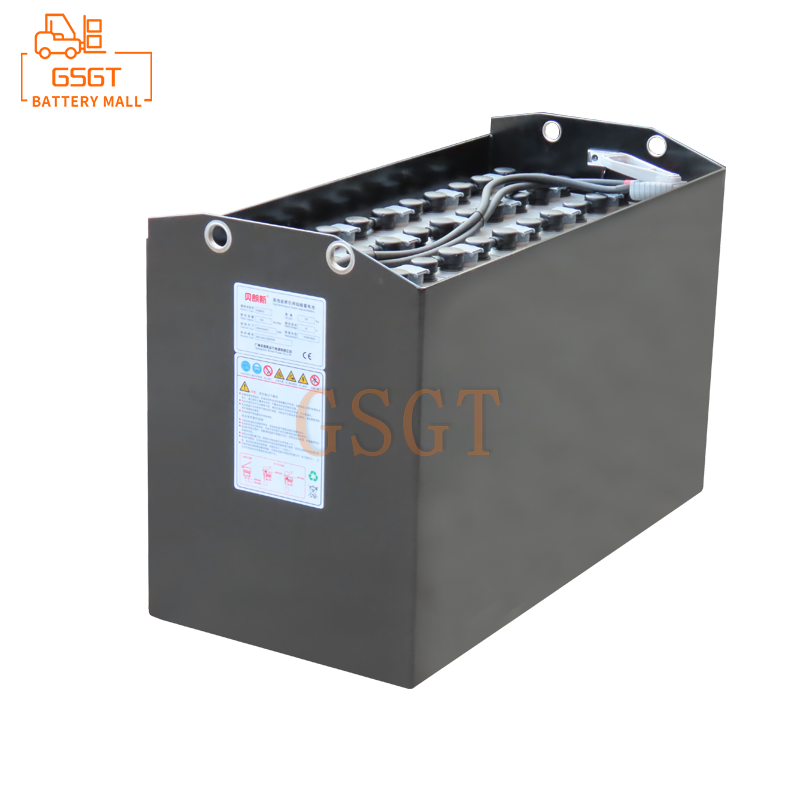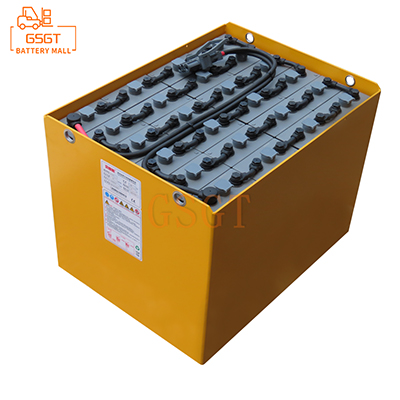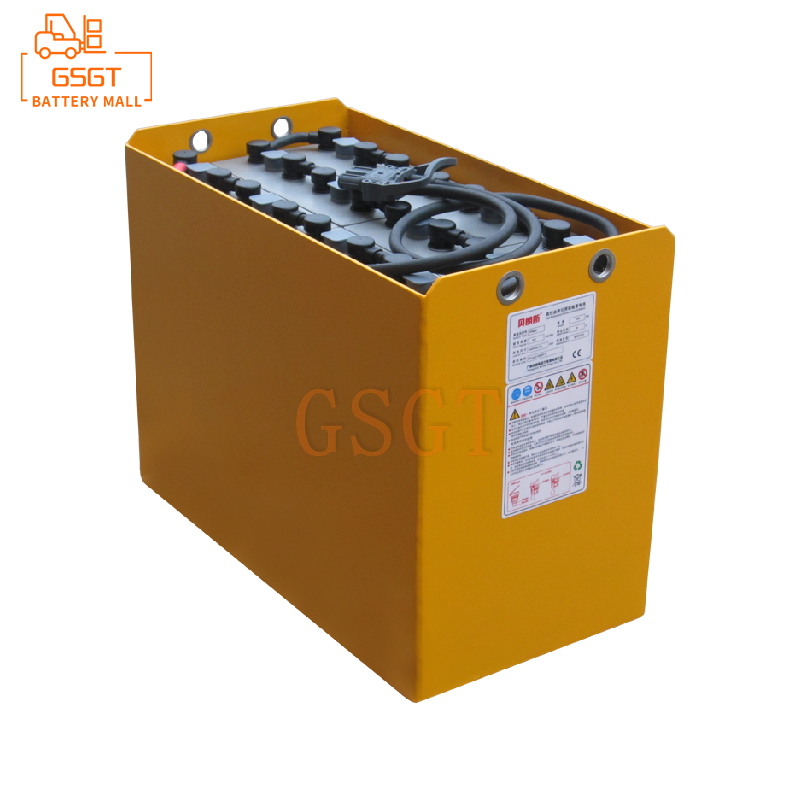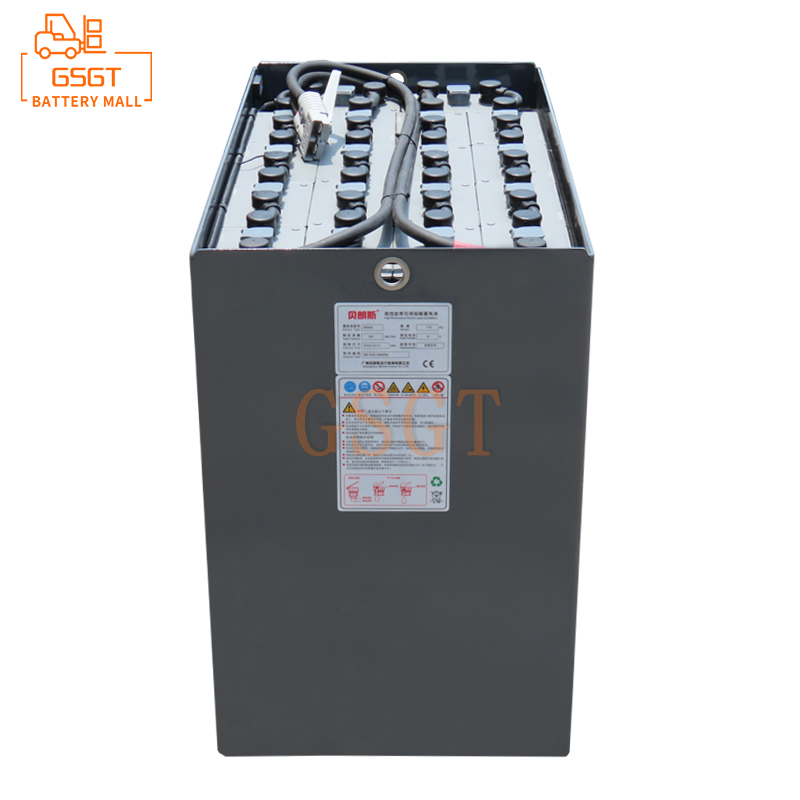Time:2025-06-16 11:01:18
Browse:683
Introduction
In modern logistics and industrial production, forklifts, as key material handling equipment, their efficient and stable operation is crucial for ensuring the smooth operation of the production process. Lead-acid batteries, with their advantages such as mature technology, low cost, high safety and a complete recycling system, have become an important choice for forklift power sources, especially widely used in heavy-duty operation scenarios. A thorough understanding of the performance of lead-acid batteries in forklifts during heavy-load operations and targeted optimization are of great significance for enhancing the working efficiency of forklifts, reducing operating costs and extending the service life of equipment.
The challenges of heavy-duty operations to lead-acid batteries in forklifts
High discharge current demand
When performing heavy-load operations, forklifts need to carry heavier goods, and the motor needs to output greater torque, which leads to a significant increase in the discharge current of lead-acid batteries. When handling goods weighing more than 3 tons, the discharge current can reach 2 to 3 times the rated current. High current discharge accelerates the chemical reactions inside the battery, speeds up the consumption of active substances on the electrode surface, and shortens the battery's service life. At the same time, the high current causes the heat generated by the internal resistance of the battery to increase. If the heat dissipation is not timely, the battery temperature will be too high, which will further accelerate the loss of water in the electrolyte and the corrosion of the plates, and reduce the performance of the battery.
Frequent deep discharge
During heavy-duty operations, forklifts have a high working intensity and long working hours, and their batteries are often in a state of deep discharge. Deep discharge occurs when the battery power drops below 50% or even lower. Frequent deep discharges will cause a large amount of lead sulfate on the plates to form and crystallize easily, resulting in sulfation of the plates, increasing the internal resistance of the battery, reducing the battery capacity, and seriously affecting the battery life. According to statistics, under frequent deep discharge conditions, the cycle life of lead-acid batteries may be shortened by 30% to 50%.
A harsh working environment
In places where heavy-duty operations are common, such as ports, logistics parks, and factory workshops, the environmental conditions are complex. Under high-temperature conditions, the chemical reaction rate inside the battery increases, the evaporation and water loss of the electrolyte intensify, accelerating the aging of the plates and reducing the battery's lifespan. Low-temperature environments increase the viscosity of the battery electrolyte, slow down the ion diffusion rate, increase the internal resistance, reduce the battery capacity, and weaken the power and endurance of the forklift. In addition, in a dusty environment, dust is prone to adhere to the battery surface and connection points, affecting heat dissipation and causing an increase in contact resistance. A humid environment may cause corrosion of the battery casing and oxidation of the terminals, reducing the battery's performance and reliability.
The performance of forklift lead-acid batteries in heavy-load operations
Power output performance
In the initial stage, forklift lead-acid batteries that meet the requirements can provide stable power output for heavy-duty forklifts. Take a forklift with a rated load capacity of 5 tons and a specific type of lead-acid battery as an example. Under standard working conditions, it can easily complete the operations of goods handling and lifting, and the speed and torque output can meet the operation requirements. However, as the usage time increases and the battery ages, the power output gradually becomes unstable. When handling goods of the same weight, the starting speed of the forklift slows down, and the time for lifting and lowering goods is prolonged, which affects the work efficiency.
Battery life performance
The new and well-conditioned lead-acid battery has a certain endurance capacity in the initial stage of heavy-load operation. However, as the number of charge and discharge cycles increases, the battery capacity gradually decays and the battery life significantly shortens. When the battery capacity drops to 70% - 80% of the initial capacity, the battery life may decrease to 2-3 hours, which cannot meet the continuous operation requirements. Frequent charging is required, affecting the continuity of operation and overall efficiency.
Service life situation
Under normal usage and maintenance conditions, the cycle life of lead-acid batteries in forklifts is generally 300 to 500 times. Under heavy-duty operation conditions, due to high discharge current, frequent deep discharge and the influence of harsh environments, its actual service life will be significantly shortened. Some enterprises with frequent heavy-duty operations have reported that the actual cycle life of lead-acid batteries in their forklifts is only 150 to 250 times, which is far lower than the theoretical value. This not only increases the cost of battery replacement, but also causes the forklift to stop due to battery replacement, affecting the production progress.
Optimization strategies for Forklift lead-acid Batteries in heavy-load operations
Reasonable selection
Based on the actual needs of heavy-load forklift operations, accurately calculate the required battery capacity and voltage. Considering factors such as the load weight of the forklift, operation time, and operation frequency, select a lead-acid battery with sufficient capacity and the ability to adapt to high discharge current. For forklifts that frequently handle heavy goods, rich electrolyte lead-acid batteries can be selected. They have sufficient electrolyte and can provide a large current output. For heavy-duty operations with high requirements for endurance, high-capacity gel lead-acid batteries can be selected. At the same time, ensure that the battery voltage matches the forklift motor and control system to guarantee stable power transmission and equipment operation.
Optimization of charging management
Intelligent charging devices are adopted and appropriate charging algorithms are applied to dynamically adjust the charging current and voltage according to the real-time status of the battery. If the three-stage charging method is adopted, that is, the combination of constant current charging, constant voltage charging and trickle charging. At the initial stage of charging, a large constant current is used to quickly replenish the battery. When it is nearly fully charged, constant voltage charging is adopted to prevent overcharging. Finally, trickle charging is used to maintain the battery. Avoid overcharging and undercharging. Overcharging will accelerate the loss of water in the electrolyte and the corrosion of the plates, while undercharging will lead to a decrease in battery capacity and sulfation of the plates. Regular equalization charging is carried out to make the voltage and capacity of each individual battery in the battery pack tend to be consistent, thereby extending the overall battery life.
Maintenance and servicing measures
Regularly check the electrolyte level of the battery, replenish distilled water or special electrolyte in time, and keep the level within the normal range. Check the battery casing and connection parts to see if there is any corrosion, leakage or other conditions, and deal with them in time. Regularly clean the battery surface and terminals to prevent the accumulation of dust and dirt, which may affect heat dissipation and contact performance. In high-temperature environments, enhance battery heat dissipation, such as installing cooling fans and setting up ventilation devices; In low-temperature environments, take insulation measures, such as using insulation covers, to enhance the battery's working performance. At the same time, regularly perform deep discharge and recharging on the battery to activate the active substances on the plates and restore part of the battery capacity.
Conclusion
Forklift lead-acid batteries play a significant role in heavy-duty operations, but they are confronted with challenges such as high discharge currents, frequent deep discharges, and harsh working environments, which lead to unstable power output, reduced endurance, and shortened service life. Through rational selection, optimized charging management, strengthened maintenance and upkeep, as well as the application of advanced technologies and other optimization strategies, the performance of lead-acid batteries in heavy-duty operations can be significantly enhanced, their service life can be prolonged, operating costs can be reduced, the efficiency and reliability of forklift operations can be improved, and strong support can be provided for the efficient operation of logistics and industrial production. With the continuous advancement of technology, lead-acid batteries for forklifts are expected to achieve greater breakthroughs in performance and reliability in the future, better meeting the demands of heavy-duty operations.

$2450

$3405

$1690

$1630

MESSAGE
Professional And Efficient
Security
Affordable Price
Professional Services